
| The Balanced Scorecard |  |
last updated 2014 July 25
.
For the students of Prof.
W. Tim G. Richardson, Toronto, Canada
| Why
is the Balanced
Scorecard important? Is it important in 2014? |
An
Introduction to the Balanced Scorecard
in conversation with Tim
Richardson in July 2014 Cousineau explained that
One of the reasons the Balanced
Scorecard remains in use is because it deals with quantitative measures
of performance instead of measures based on effort.
"In a globally competitive economic environment where medium and large sized companies suffer the tyrany of publishing quarterly earnings and stock performance is judged by a diverse group of investors, including institutional investors many time zones away, it has become more important for decision makers to evaluate the CEO and senior management team and to do such judgement in an effective and transparent way." |
| the
Balanced
Scorecard Transparency |
Cousineau,
in a 2011 paper, reminds us that the corporate scandals of recent years
encourages companies to provide performance measurement information in
a more transparent way. Read his paper at
ocgroup.ca/Publications/tbl_march_2011_p13.pdf Cousineau makes many good points, including the explanation of why transparency is important. Cousineau explains"if you add in the rapid advances in the technological environment, particular IT and communications technology, mixed together with an explosion in the use of various text and image and video based Social Media compiled with the rise of bloggers and "citizen journalists", companies are seeing a much greater exposure of their private information - the corolloray of which is the need to include such information in their Performance Measurement details... cause if they don't, the public, media, activist investors and institutional investors will find out anyways". WTGR |
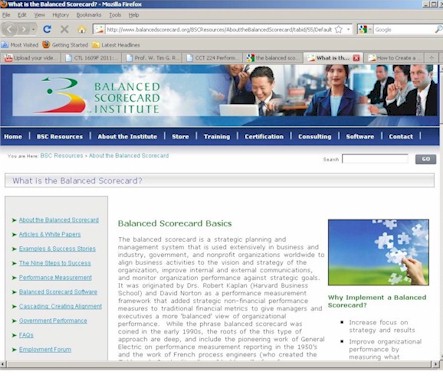 |
"The balanced scorecard is a strategic planning and management system" |
..
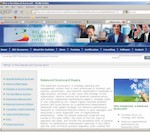 |
The
"Balanced Scorecard Basics"
"It
was originated by Drs. Robert Kaplan (Harvard Business School) and David
Norton as a performance measurement framework that added strategic non-financial
performance measures to traditional financial metrics to give managers
and executives a more 'balanced' view of organizational performance."
While Kaplan and Norton invented the term "Balanced Scorecard", the concept of having a systematic way of measuring performance goes back to some of the giant sized manafacturing companies, such as General Electric. As the competitive environment became more intense, companies like General Electric needed to find specific ways to "measure" the consequence of what they were doing to ensure that they could produce products and services most efficiently, and therefore save money and time and resources. |

|
was trying to fix |
It
was undersood that "traditional performance measurement systems" such as
management accounting based systems were based on results - meaning you
calculated and totalled the "math" for some processes and tried to understand
what went wrong from the results, after the fact.
Dr. Robert Davies ( drrobertdavies.com ) explains that using "old school" managment accounting systems was an "Outcome Focus". Davis noted "Established financial indicators such as turnover and profit before tax are outcome indicators. They only alert us when things have gone wrong and the effect is being felt in the balance sheet. Such indicators and measures don’t provide us with an indication of when things may go right or wrong in the future. In short, these measures are lagging not leading indicators - they do not provide us with an early warning system." Dr.
Robert Davies
|

Vision
|
The
"Balanced Scorecard Basics"
One important "preamble" to understanding the circumstance of the Balanced Scorecard is the stipulation that "is used extensively in business and industry, government, and nonprofit organizations worldwide to align business activities to the vision and strategy of the organization, improve internal and external communications, and monitor organization performance against strategic goals" |

Taiwan's "Taipei 101", the world's tallest building from 2004 to 2010 by WTGR April 2011 |
It
is useful to key in on the words "align business activities to the vision
and strategy of the organization, improve
internal and external communications, and monitor
organization performance against strategic
goals"
It is suggested that if the organization's Vision / Mission Statement and Goal were crafted properly then we should diligently check to see if the activities carried out to accomplish that goal are indeed activities that are measurably useful and of consequence. What's the point of having a lofty goal if you don't know if your work is progressingly appropriately to achieve the goal.
|
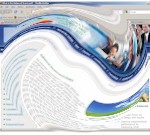 |
Evolution
It has happened, with a number of professors that invent some process or system, that it becomes "commercialized", meaning people want to teach companies fow to do things a certain way to fit the theory, and they end up creating "product" that can be sold - usually based on a method of going thorugh certain steps The "Balanced Scorecard" has similarly morphed into situation where there is a "full strategic planning and management system" which consultants can use to help companies that want to have their perfromance measured such that they can make improvements to be more efficient and effective. |
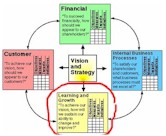 |
The
Learning & Growth Perspective
"This perspective includes employee training and corporate cultural attitudes related to both individual and corporate self-improvement." Learning and Growth is particularly important for IT companies were the knowledge-worker organization depends on having the brightest and best educated people to be competitive in developing and marketing new products and services. Lifetime learning is a big part of the way that companies treat knowledge workers who constantlyhave to be updated due to the fast moving changes in the technological environment. |
 |
Lifetime learning has also led to a fast growth in "alternative education" such as MSCE instead of M.Sc. as well as the proliferation of certification within industry associations and certification of competency with leading software and systems., such as Learning is not just being trained on new systems and new software, it also includes " things like mentors and tutors within the organization, as well as that ease of communication among workers that allows them to readily get help on a problem when it is needed. It also includes technological tools; what the Baldrige criteria call "high performance work systems." |
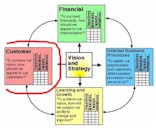 |
The
Customer Perspective
When
the Competitive
Environment is intense - meaning a lot of people competing against
you to serve your customers, and a lot of competition for resources to
produce your product, it gives and advantage to the customer
Companies operating in an intense competitive environment therefore have to be very attentive about serving the customer and satisfying customers in order to maintain and grow their business. Terms
such as CRM Customer Relationship Management and CLV (Customer Lifetime
Value), Customer Retention are used to describe what companies do to handle
information about customer activities and maintaining good relations which
lead to long term purchase arrangement.
Customer Retention
|
 |
The
Customer Perspective and the influence of web based businesses
"The
Internet is shifting power—irreversibly—from sellers to buyers. Thanks
to the Internet, B2C consumers and B2B purchasing agents can more efficiently
explore more shopping options and more easily educate themselves. Customers
have an abundance of options; and now they can get information about products
or services that interest them in a much shorter amount of time."
Web based businesses are challenged because customers have
|
 |
The
Customer Perspective and the influence of "blended" social-cultural environment
In Canada we like to think we are special because we are so multi-cultural and welcoming of different cultures and faiths
|
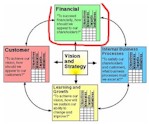 |
The
Financial Perspective
"number crunching" and the use of statistics has been popular for many years among business leaders in order to figure out the things a company is doing well and the things that need improving. We don't need more financial
information - there is already too much.
|
 |
The difference
between information and intelligence
Most people know that all cell phones sold since 2004 have GPS capability which may or may not be activated depending on the jurisdiction. Here is an example
- while important, and newsworthy, this is just information - this is actionable intelligence because it is information specific enough that a competitor such as Bell Mobility could proceed to develop a JV with Scotiabank such that Rogers would not have a monopoly in this area for too long. |

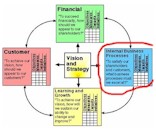 |
The
Business Process Perspective
"This perspective refers to internal business processes. Metrics based on this perspective allow the managers to know how well their business is running, and whether its products and services conform to customer requirements (the mission). " The key part to whether this part of the scorecard is useful is based on the point that "These metrics have to be carefully designed by those who know these processes most intimately" One of my (WTGR) biggest criticisms of MBA experts on telling a business how to operate, is that their business advice is
|
|
of the Balanced Scorecard |
Marlys Lipe (Oklahoma) and Steven Salterio (Queen's) wrote in a 2000 paper http://psychology.uwaterloo.ca/~dkoehler/ACC784/LipeSalterio2000.pdf about some problems with managers using the Balanced Scorecard. Lipe and Salterio explained that "The BSC is a relatively complex and costly measurement system." In emails with WTGR in Sept
2013, Prof. Salterio noted
|
|
|
CONTACT I MAIN PAGE I NEWS GALLERY I E-BIZ SHORTCUTS I INT'L BIZ SHORTCUTS I MKTG&BUSINESS SHORTCUTS I TEACHING SCHEDULE |
| . | |
| MISTAKES ITEXTS USED I IMAGES I RANK IDISCLAIMER I STUDENT CONTRIBUTORS I FORMER STUDENTS I | |
| . |